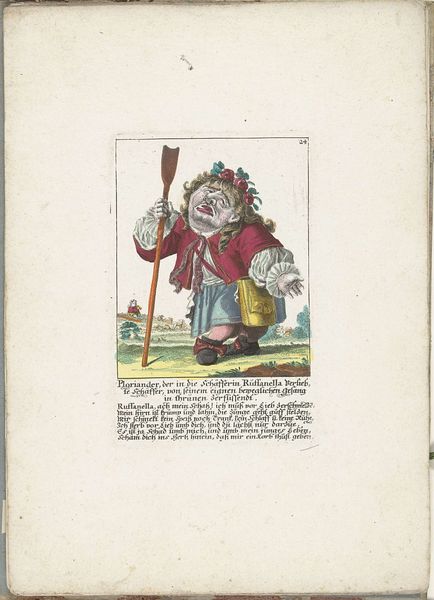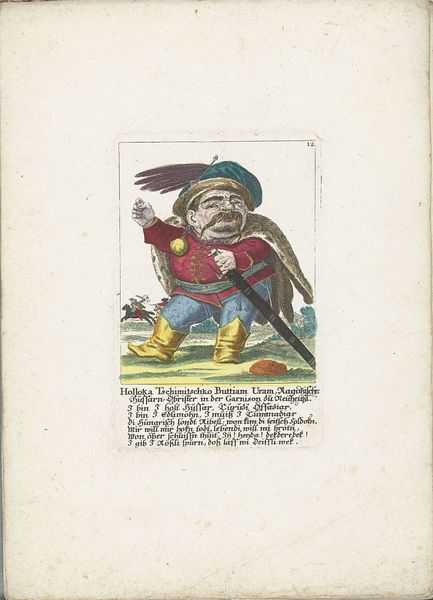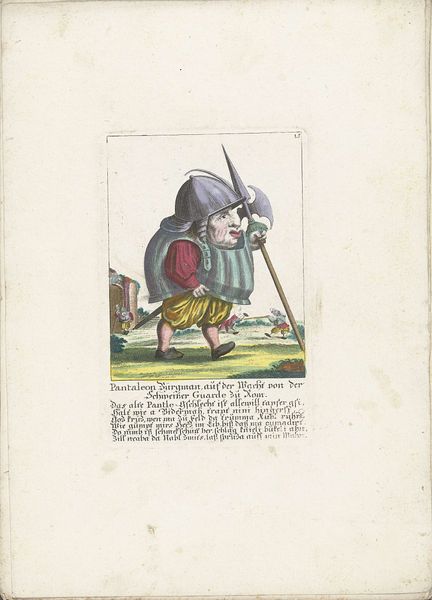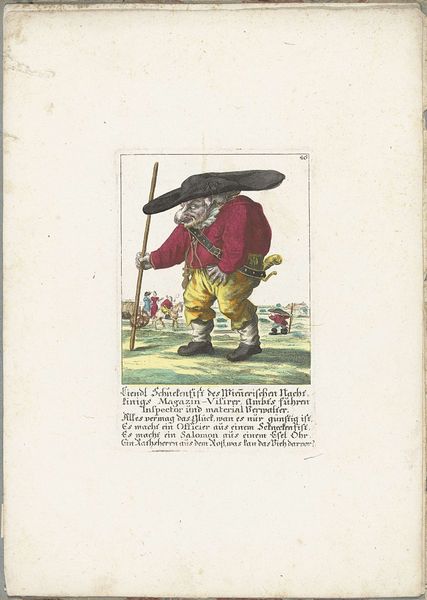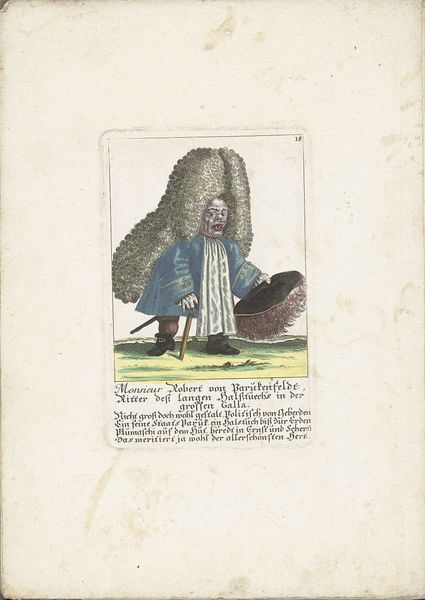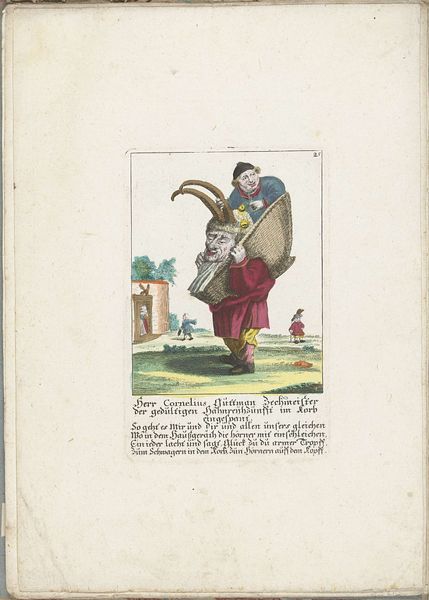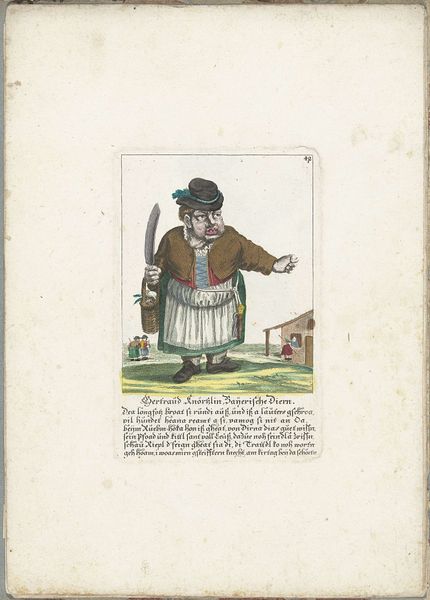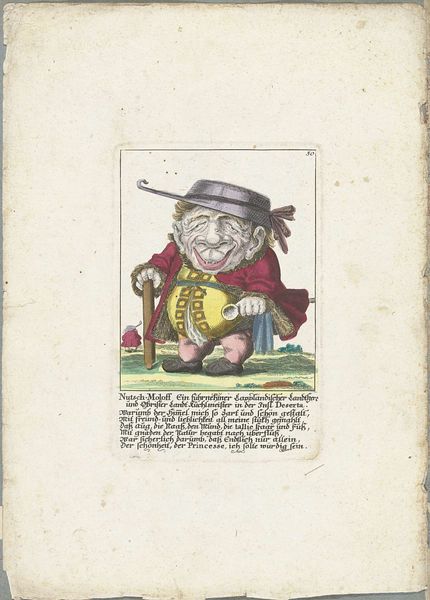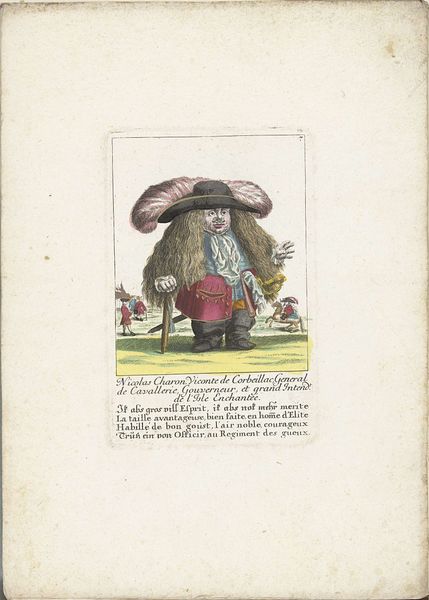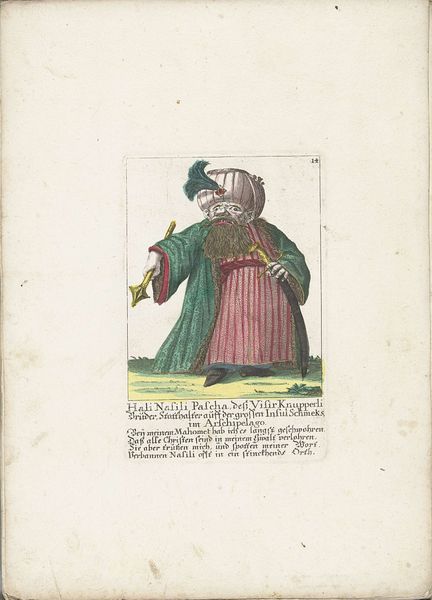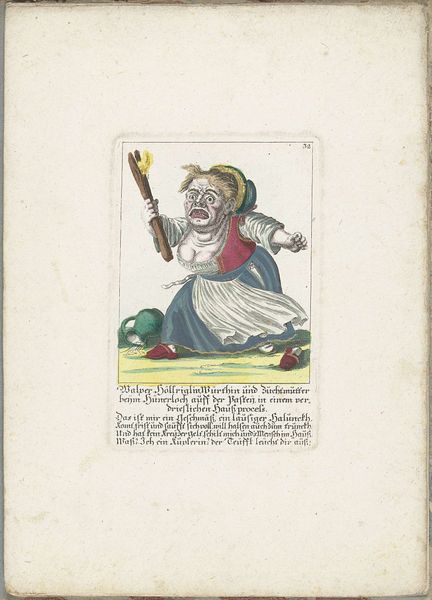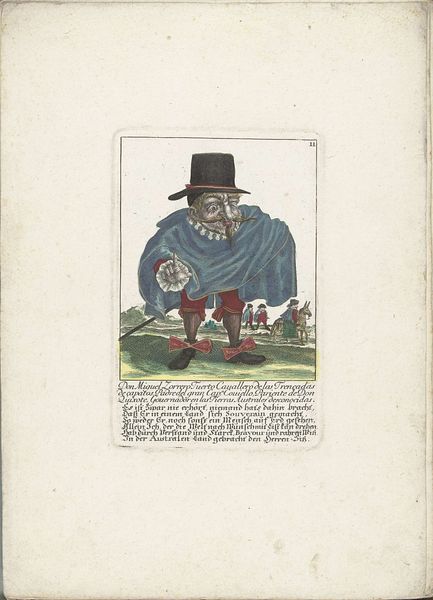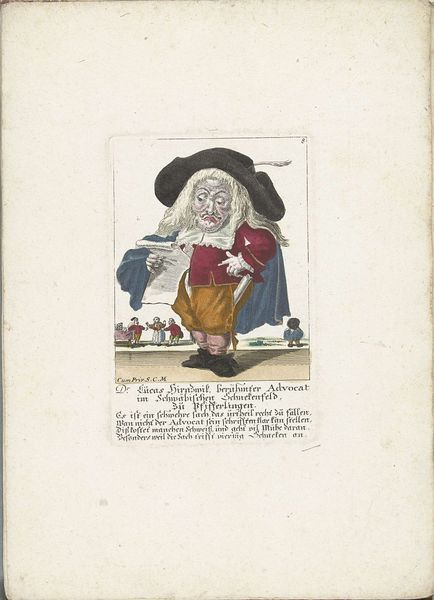
De dwerg Monsieur le Marquis de Sauterelle, ca. 1710 1705 - 1715
0:00
0:00
martinengelbrecht
Rijksmuseum
print, etching
#
portrait
#
aged paper
#
baroque
# print
#
etching
#
caricature
#
figuration
#
watercolour illustration
Dimensions: height 170 mm, width 110 mm, height 320 mm, width 225 mm
Copyright: Rijks Museum: Open Domain
Curator: Welcome. We’re standing before "The Dwarf Monsieur le Marquis de Sauterelle," a whimsical etching produced by Martin Engelbrecht around 1710. Editor: Immediately, I'm struck by the figure’s exaggerated form – the large head dwarfing his tiny legs. There’s a clear imbalance; the color seems applied in a delicate way, almost tentative. It's interesting to compare it to the rigidity of the etched line itself. Curator: It’s certainly a caricature, but Engelbrecht seems to be saying something deeper about status and perhaps even self-perception. The Marquis, despite his physical stature, is decked out in elaborate finery, the wig becoming the dominant symbol of aristocratic identity. The text below includes a declaration written in period vernacular of the artist declaring himself “in love to madness”. Editor: I notice the flatness, the compressed space. Figures in the background seem almost pasted in, emphasizing the foreground’s isolation and highlighting the disjunction of scale. How do these deliberate distortions serve Engelbrecht's social critique? Curator: The print would have likely been circulated amongst the educated classes. The Marquis, as a grasshopper, becomes an absurd figure through whom courtly love itself, the game of appearance and social aspiration can be seen to reveal an important tension. He represents someone striving, in effect, to become someone else. In the context of the period’s evolving social structures, Engelbrecht’s Marquis embodies both the promise and the pretense that could enable social change. Editor: Perhaps the awkward perspective and uneven color contribute to the reading by creating a certain distance, a Brechtian effect of alienation… Curator: Possibly so. But the underlying appeal also seems connected to broader concerns about social performance and constructed identity that remain central to caricature even today. Editor: It's interesting how the close reading makes it appear even more intricate, highlighting the artist's intentions through its careful execution. Curator: Absolutely. Thinking about what symbols and ideals this funny little nobleman calls forth continues to illuminate the relationship between seeing and believing. Editor: Yes, the work gives one much to reflect upon after some close observation.
Comments
No comments
Be the first to comment and join the conversation on the ultimate creative platform.
